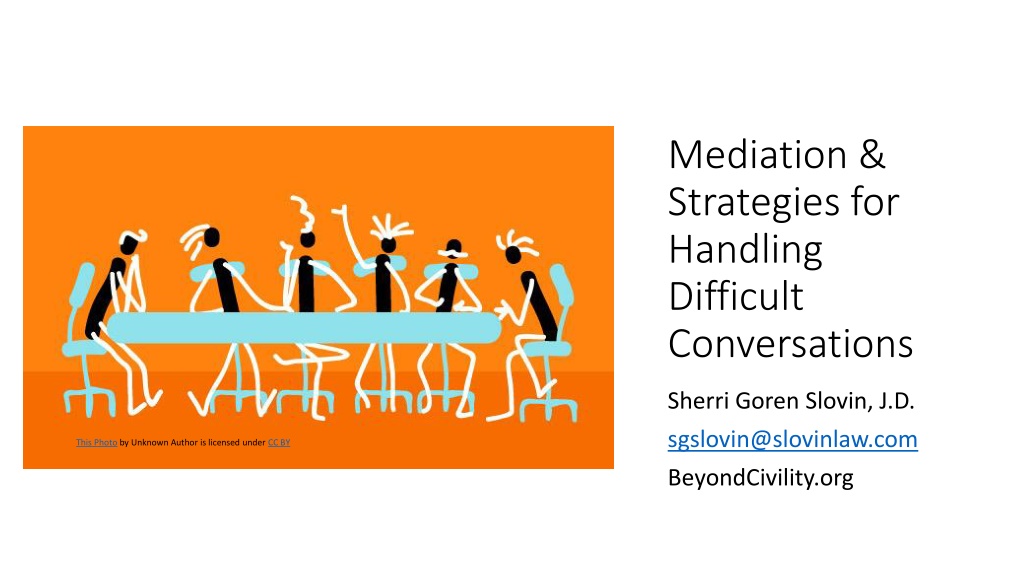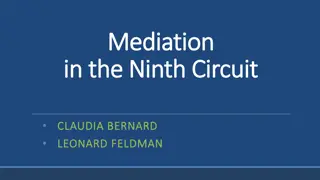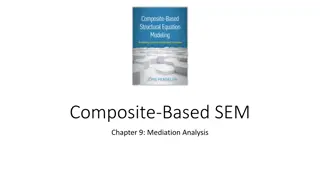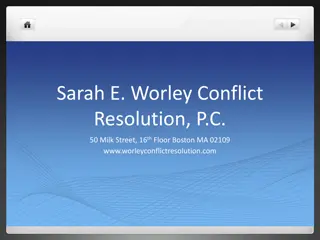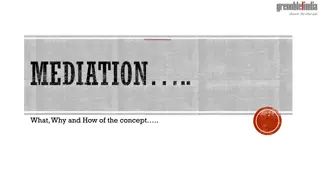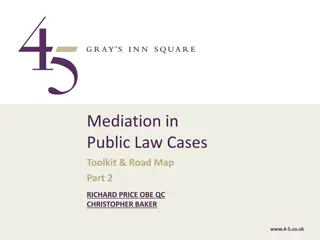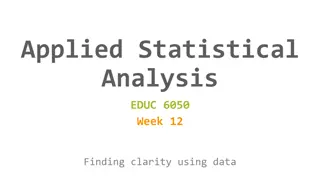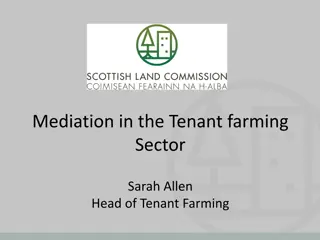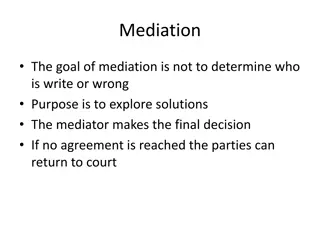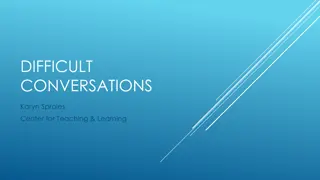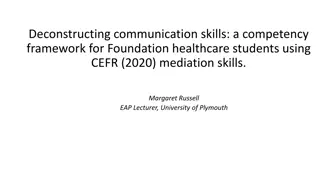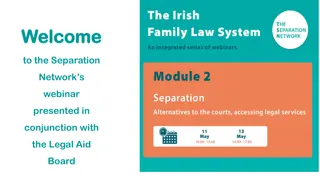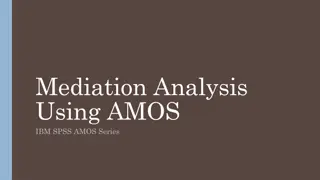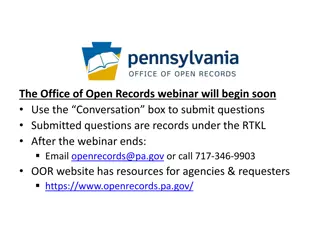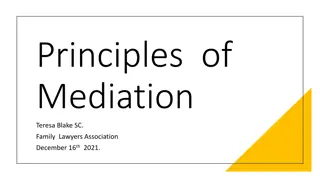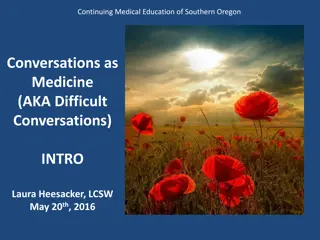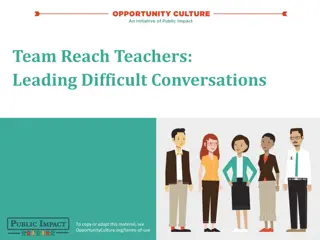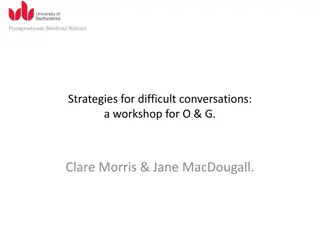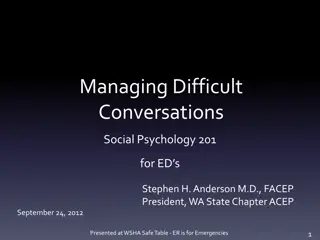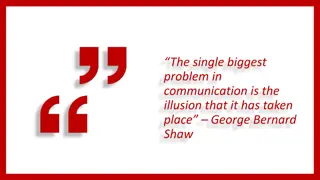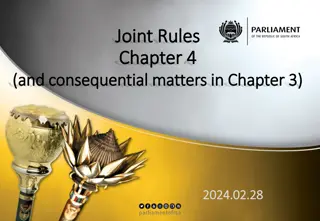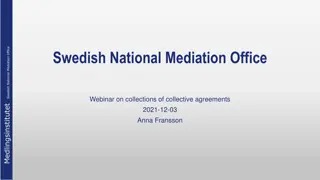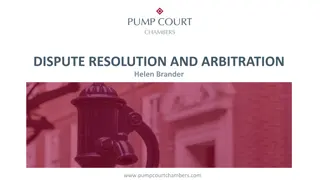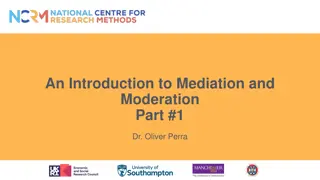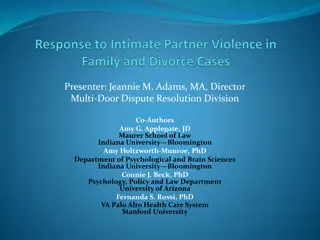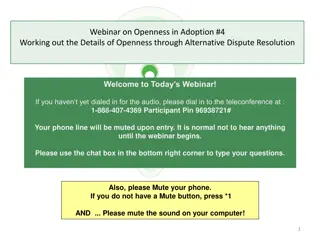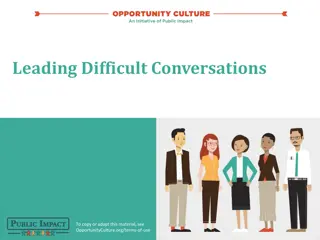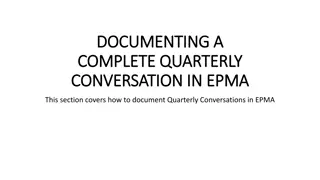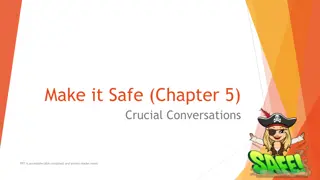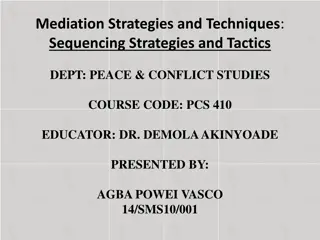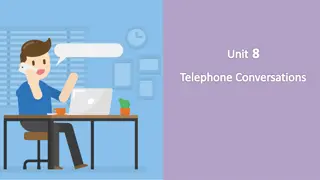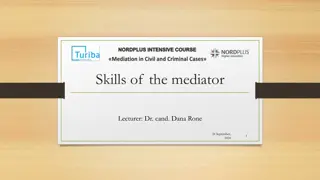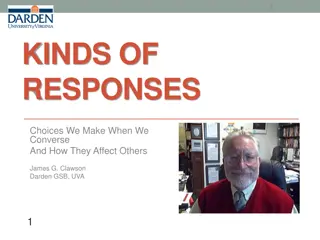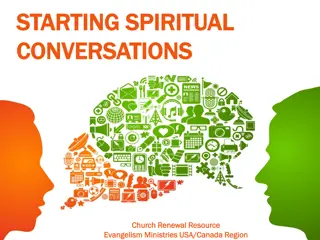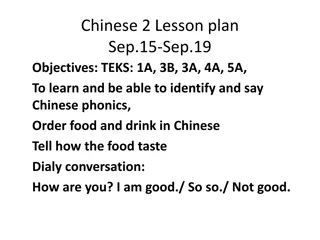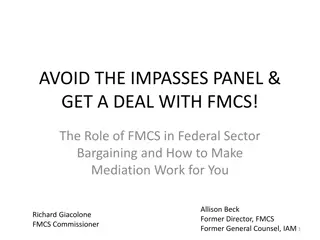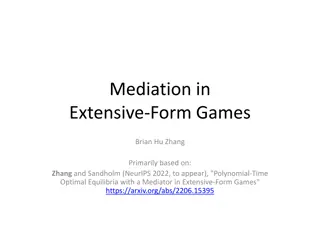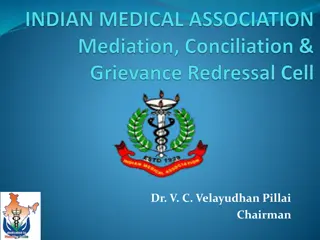Effective Mediation Strategies for Difficult Conversations
Explore mediation as a process for resolving differences with an impartial party, focusing on primary needs, communication techniques, neuroscience insights, the power of storytelling, SCARF model, social triggers, and active listening levels.
- Mediation Strategies
- Difficult Conversations
- Communication Techniques
- Neuroscience Insights
- Active Listening
Download Presentation

Please find below an Image/Link to download the presentation.
The content on the website is provided AS IS for your information and personal use only. It may not be sold, licensed, or shared on other websites without obtaining consent from the author. Download presentation by click this link. If you encounter any issues during the download, it is possible that the publisher has removed the file from their server.
E N D
Presentation Transcript
Mediation & Strategies for Handling Difficult Conversations Sherri Goren Slovin, J.D. sgslovin@slovinlaw.com BeyondCivility.org This Photo by Unknown Author is licensed under CC BY
THE CORE OF MEDIATION Mediation is a PROCESS wherein the parties meet with a mutually selected IMPARTIAL and NEUTRAL person who assists them in the NEGOTIATION of their differences.
Primary Needs: Status Certainty Relatedness Fairness Emotions Macro/Micro Substantive Process Interests Values Consequences Information OBJECTIVE STANDARDS Options
Communication Understand Determine what you are trying to accomplish Advocate Both Connect with the other person with Curiosity Actively Listen Watch for Triggers/Defensiveness-SCARF
How does Neuroscience help us Understand Each Other?
THE POWER OF STORY CHANGES YOUR BLOODSTREAM- OCYTOCIN AND CORTISOL WORKS LIKE VIRTUAL REALITY- AREA OF BRAIN TRIGGERED AS THOUGH YOU ARE EXPERIENCING IT CREATES IMAGINATION, ELABORATION AND RECALL- EMOTIONAL PROCESSING IS POWERFUL
SCARF SCARF A diagnostic tool tied to what we know about the brain It s about approach(reward/engage) and avoid (threat/defend) Brains two systems: Prefrontal cortex Limbic- amygdala
Social Triggers that Generate both Avoid and Approach Status- Relative importance to others Certainty-Brain likes patterns Autonomy- Sense of Control over events Relatedness- A sense of safety with others Fairness- Perception of equitable exchanges, reciprocity
Active Listening Listen for 3 levels of input Speaker s-Substance/Content-Factual information Speaker s Feeling (Empathetic meaning)- the speaker s attitude, belief, value, feeling, emotion, need interest Our Own Critical Response- Awareness of how we are filtering the message
Understanding Defensiveness In a threat state, we act defensively We are conditioned to defend: Invasion of one s space or territory is an act of aggression. When our ideas are attacked, even by the slightest perception of hostile or unfriendly inquiry, our first natural reaction is to defend our ideas as valid and worthy. How have others made you feel defensive/ How have you made others feel defensive?
WHEN YOU FEEL REALLY DEFENSIVE Recognize and Count to Three Be Curious/ Admit to feeling reactive. I am feeling very reactive and I know until I calm down, whatever I say or do will make this conversation worse and I am not going to do that. Can we take a few steps back. I want to understand what it is about this issue that makes you feel the way you do. There might be some place we agree. Go from Macro to Macro to humanize.
